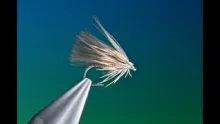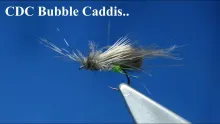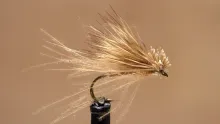XL size caddisflies whet the appetite and curiosity of many trout. Even when insects are sparse on the surface, a stripped Grandis can be a winner on the river or trout lake. Here, renowned Swedish fly tyer Håkan Karsnäser demonstrates how to tie his popular dry fly treat.
There are approximately 1700 species of caddisflies in Europe, and worldwide, almost 15,000 insects belong to this family. In comparison, we only have just over two hundred different mayfly species along European rivers and lakes. Like the mayflies, including the large mayflies, the hatching of the largest caddisflies usually peaks in June. Among fly fishermen, the spectacular mayfly fishing tends to attract a lot of attention, but the fish are not blind to the caddisfly treats, which are usually seen in the late evening when the mayfly fishing has died down. The imprint of such large insects skittering awkwardly on the surface may be stored in the fish's memory for later use, or perhaps the trout are simply opportunists who don't let a potentially energy-rich snack float by unnoticed. Either way, the large caddis flies are present until September and October, where they can be fished both as imitations or as attractor flies that can provoke violent strikes on the surface of the river or trout lake when fished blindly and actively.
Hook: Ahrex FW570 - Dry Long #6
Thread: Black GSP
Body: Brown seals fur or similar and natural sand-colored CDC
Wing: Natural brown CDC and partridge feathers
Head: Deer hair
Want to know more about Ahrex Hooks?
Ahrex Website: http://www.ahrexhooks.com
Ahrex Facebook: https://www.facebook.com/Ahrex-Hooks-
Instagram: https://www.instagram.com/ahrexhooks/
Ahrex Blog: https://ahrexhooks.com/blog/
- Log in to post comments







